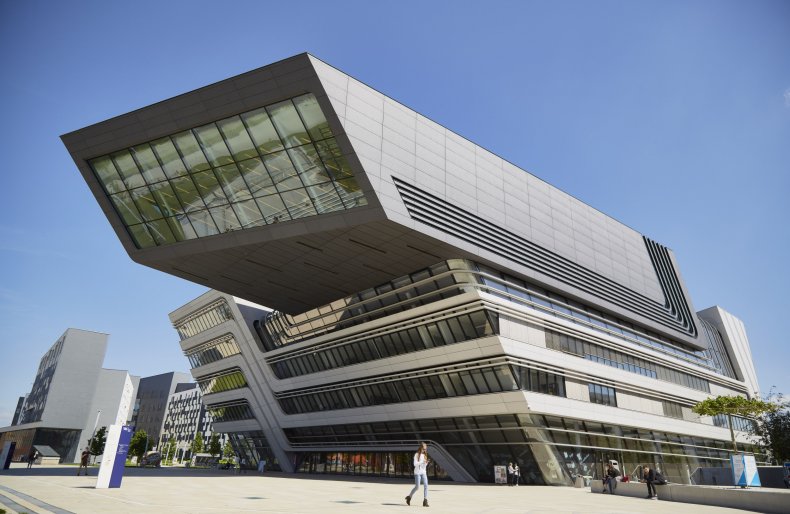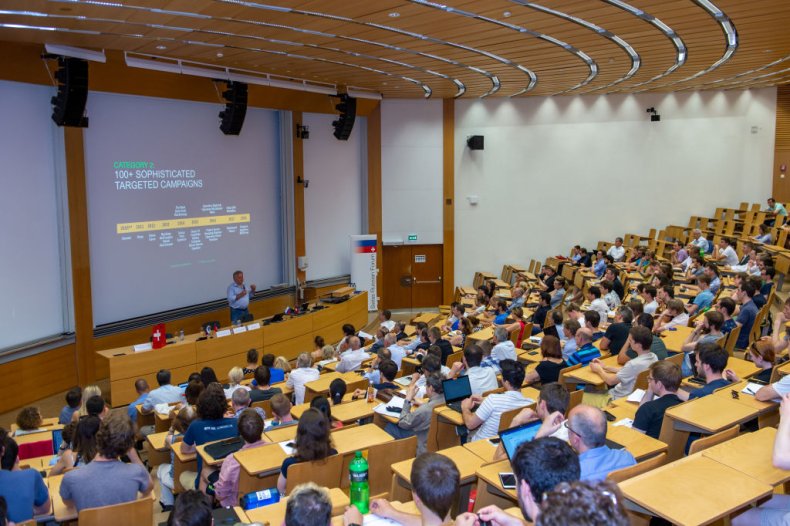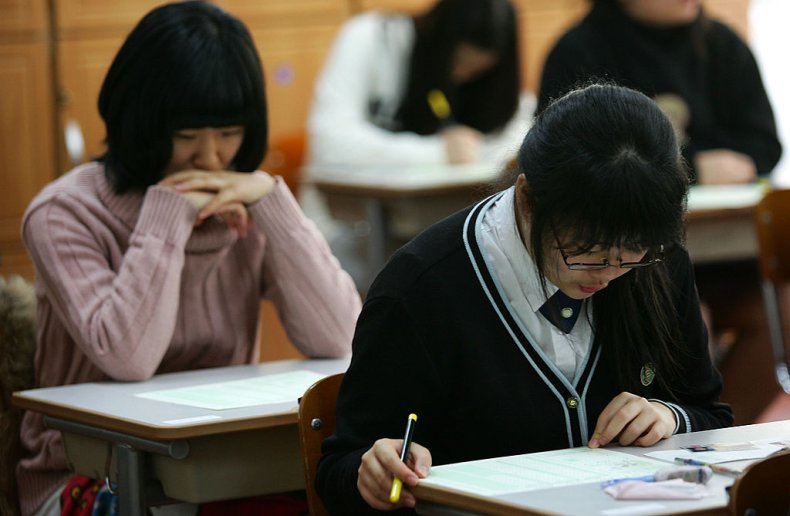Education’s importance is underlined by the fact it determines both an individuals’ and a nation’s future success.
A 2017 UNESCO report revealed the number of students worldwide attending higher education institutions increased from 100 million to 207 million between 2000 and 2014.
However, a gaping gulf remains between counties’ educational attainment; while most adults in more economically developed nations are literate, the quality of education is considered low in underdeveloped and undeveloped nations.
The Organisation for Economic Co-operation and Development (OECD)—a leading think tank among countries with developed economies—has analyzed education levels among its members.
The resulting data was acquired in 2019, or the latest available, and includes the percentage of both sexes, aged between 25 and 34 years old.
Take a look at the most educated countries in the world, according to percentage of population with tertiary (highest level) education.
12. Netherlands (49 percent)

Pierre Crom/Getty Images
An OEDC report highlighted how tertiary attainment among young adults increased by 8 percentage points between 2008 and 2018.
The study adds: “Despite rising attainment, a tertiary qualification still provides substantial benefits in the labour market.”
11. United States (50.4 percent)

Kevork Djansezian/Getty Images
The OECD reports that few students will pursue tertiary education beyond a college degree, despite high rewards in the labor market for those who do.
The organization writes: “In the United States, the share of young adults (25-34 year-olds) with a tertiary degree increased by 8 percentage points between 2008 and 2018 to reach 49 percent.
“However, the national figure conceals wide variation across states. In 2017, the rate varied within the United States from 32 percent in Louisiana and West Virginia to 73 percent in the District of Columbia [in 2019].
10. United Kingdom (51.8 percent)

Dan Kitwood/Getty Images
An OEDC report found that while tertiary-educated workers perform significantly better in the labor market, their field of study has a “profound impact”.
“In the United Kingdom, the average employment rate for tertiary-educated adults is 5 percentage points higher than for those with only an upper secondary or post-secondary non-tertiary qualification,” the organization said.
“This is relatively low; only five other OECD countries have a smaller employment advantage. However, the employment rate for those with an upper secondary or post-secondary non-tertiary qualification in the UK is relatively high.”
9. Austria (52.5 percent)

Pierre Crom/Getty Images
An OEDC report found funding remains an issue in Austria’s higher education system, which “is preventing Austria from improving education outcomes.”
“The big increases in student numbers in recent years have not been matched by corresponding staff or funding increases,” it said.
8. Switzerland (52.7 percent)

Robert Hradil/Getty Images
Switzerland maintains a large share of tertiary-educated adult, while also boasting the second-highest proportion of doctorate holders among OECD countries, the OECD found.
Doctoral programmes also appear to be very attractive to international students in this country.
7. Luxembourg (55 percent)

frantic00/Getty Images
Luxembourg has one of the highest shares of participating adults who are in non-job-related education, among countries with available data.
The OECD writes: “A master’s degree is the commonest qualification held by tertiary-educated adults in Luxembourg.
“The employment advantage of a master’s degree over a bachelor’s is double the OECD average.”
However, the report adds: “While Luxembourg reports higher levels of work-life balance than on average, work-life balance decreases with higher educational attainment, a similar trend to other countries.”
6. Lithuania (55.2 percent)

Dan Kitwood/Getty Images
Tertiary educational attainment levels have increased in the past decade and tertiary-educated adults have strong employment opportunities.
However, an OECD report notes how total expenditure per student in Lithuania is low compared to the average, especially at the tertiary level.
The organization writes: “Lithuania spends $7,700 per tertiary student compared to the OECD average of $15,600.
5. Ireland (55.4 percent)

Vincent Isore/IP3/Getty Images
Good employment prospects and completion rates have enabled high levels of educational attainment in Ireland, according to the OECD.
The organization writes: “Nearly half of all adults (25-64 year-olds) in Ireland (47 percent) have earned a tertiary qualification, one of the largest shares across OECD countries.”
4. Japan (61.5 percent)

Christian Ender/Getty Images
An OEDC report found that while Japan has a well-developed tertiary education system, its students are “rather homogenous.”
The organization writes: “Over half of 25-64 year-olds had attained tertiary education in 2018, 13 percentage points higher than the OECD average.
“[But] Japan has relatively low shares of adult and international students compared to OECD countries.”
3. Russia (62.1 percent)

Frédéric Soltan/Corbis/Getty Images
An OEDC report found that while Russia has a well-educated population, spending on tertiary education remains surprisingly below the OECD average.
The organization writes: “The Russian Federation’s expenditure per student at tertiary level was $8,479 in 2016, one of the lowest levels among the OECD countries, compared with an OECD average of $15,556.”
2. Canada (63 percent)

Frederic Lewis/Getty Images
Although Canada has a large share of tertiary-educated adults, relatively few have advanced tertiary degrees, according to the OECD.
The organization writes: “Despite this above-average attainment, the proportion of tertiary-educated younger adults who have obtained a master’s or a doctoral degree is below the OECD average.
“One-quarter of 25-34 year-olds had completed a short-cycle tertiary programme and about the same proportion had completed a bachelor’s degree, but only about 10 percent would have completed a master’s or doctoral degree, against the OECD average of 15 percent.
1. South Korea (69.8 percent)

Chung Sung-Jun/Getty Images
Almost every young adult in Korea possesses an upper secondary qualification, with an above-average employment rate for those with a tertiary education, the OECD’s “Education at a Glance” report found in 2019.
The report added a minimum of 90 percent of 3-17 year-olds were enrolled in education in 2017, with 87 percent among 15-19 year-olds, and falling to 50 percent for 20-24 year-olds.
The organization also found the country spends more on education than the OECD average at primary and tertiary levels of education; private expenditure is significantly higher than public expenditure at tertiary level; and enrolment rates in early childhood and care are high, with the majority of children enrolled in private institutions.